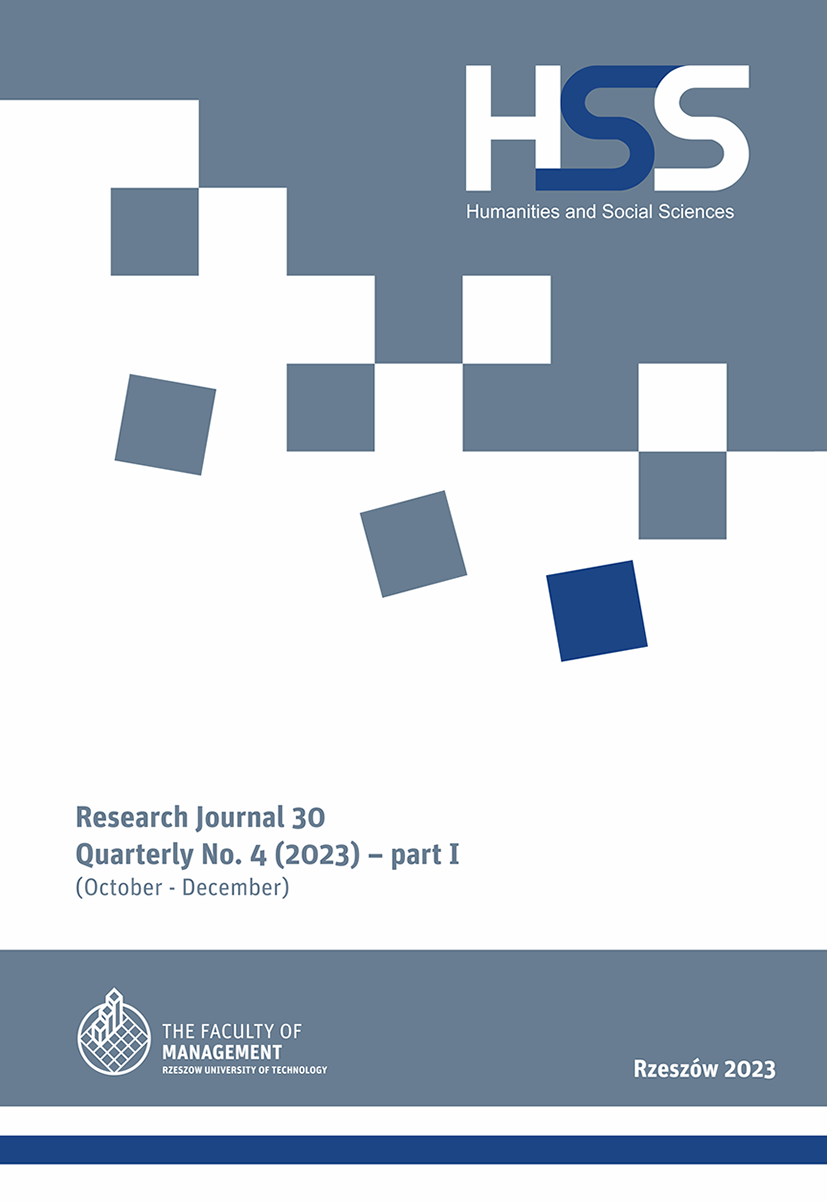Abstract
This article aims to evaluate the approach of the public relations (PR) industry to cybersecurity-related topics. The article is based on research results conducted by a team under the authors’ supervision. In 2022, we conducted quantitative research using the Computer-Assisted Web Interviewing technique (CAWI), and its purpose was to acquire knowledge in the field of perception and understanding of the cybersecurity topic by specialists in the public relations industry in Poland. The research results revealed several previously unexplored areas, highlighting gaps in current understanding. This research contributes new insights into the cybersecurity perceptions of PR professionals, enriching the existing body of scientific knowledge.
References
Agrafiotis, I., Nurse, J.R.C., Goldsmith, M., Creese, S., Upton, D. (2018). A taxonomy of cyber-harms: defining the impacts of cyber-attacks and understanding how they propagate. “Journal of Cybersecurity”, Vol. 4(1). DOI: 10.1093/cybsec/tyy006.
Ahmad, R., Alsmadi, I., Alhamdani, W., Tawalbeh, L. (2023). Zero-day attack detection: a systematic literature review. “Artificial Intelligence review”, Vol. 56.
Aji, G.G., Widod S., Aji, G.N., Aji, G.G., Prawitasari, D. (2023) Building trust in the digital age: How HRM and cybersecurity collaborate for effective stakeholder relations. “Management Analysis Journal”, Vol. 12(2).
Bansal, G. (2017). Distinguishing between privacy and security concerns: an empirical examination and scale validation. “Journal of Computer Information Systems”, Vol. 57(4).
Commetric. (2023). Is Banking´s Crisis PR Stuck in the Stone Age? Why Media Analytics is Crucial for Today´s Cybersecurity Challenges. Access on the internet: https://commetric.com/2023/09/18/is-bankings-crisis-pr-stuck-in-the-stone-age-why-media-analytics-is-crucial-for-todays-cybersecurity-challenges/.
Chałubińska-Jentkiewicz, K. (2019). Cyberbezpieczeństwo – zagadnienia definicyjne. “Cybersecurity and Law”, Vol. 2(2).
Craigen, D., Diakun-Thibault, N., Purse, R. (2014). Defining Cybersecurity. “Technology Innovation Management Review”, Vol. 4(10).
Franco, M.F., Lacerda, F.M., Stiller, B. (2022). A Framework for the planning and management of cybersecurity projects in small and medium-sized enterprises. “Revista de Gestão e Projetos”, Vol. 13(3).
Gaule, H. (2023). Artificial Intelligence in Public Relations and Communication: An Approach for Integrating AI Education into Communications Curricula [In:] Adi, A., ed., Artificial Intelligence in Public Relations and Communications: cases, reflections and predictions. Berlin: Quadriga University of Applied Sciences.
Hoffmann, T. (2018). Główni aktorzy cyberprzestrzeni i ich działalność [in:] Dębowski T., ed., Cyberbezpieczeństwo wyzwaniem XXI wieku. Łódź–Wrocław: ArchaeGraph.
Hu, T., Wang, K.-Y., Chih, W., Yang, X.-H. (2018). Trade off Cybersecurity Concerns for Co-Created Value. “Journal of Computer Information Systems”, Vol. 60(5).
Janczewski, R. (2022). Cyberbezpieczeństwo w życiu społecznym [In:] Stala, J., Butrymowicz, M., ed., W służbie społeczeństwu. Polska w obronie praw człowieka na świecie i w kraju. Kraków: Wydawnictwo Naukowe UPJPII.
Kaczmarczyk, B., Dobrowolski, P., Dąbrowska, M. (2018). Wybrane aspekty edukacji dla bezpieczeństwa. Toruń: Wydawnictwo Adam Marszałek.
Kemmerer, R.A. (2003). Cybersecurity. Portland: 25th International Conference on Software Engineering.
Kim, N., Lee, S. (2018). Cybersecurity Breach and Crisis Response: An Analysis of Organizations’ Official Statements in the United States and South Korea. “International Journal of Business Communication”, 58(4).
Knight, R., Nurse, J.R.C. (2020). A framework for effective corporate communication after cyber security incidents. “Computers & Security”, Vol. 99.
Korzeniowska, H. (2004). Edukacja dla bezpieczeństwa w systemie oświatowym Europy na przykładzie Polski i Słowacji. Kraków: European Association for Security.
Krawczyk-Sokołowska, I., Caputa, W. (2023). Awareness of network security and customer value – The company and customer perspective. “Technological Forecasting & Social Change”, Vol. 190.
Li, Y. (2011). Empirical Studies on Online Information Privacy Concerns: Literature Review and an Integrative Framework. “Communications of the Association for Information Systems”, 28(1).
McGregor, R., Reaiche, C., Boyle, S., de Zunielqui, G.C. (2023). Cyberspace and Personal Cyber Insurance: A Systematc Review. “Journal of Computer Information Systems”. DOI: 10.1080/08874417.2023.2185551.
Mijwil, M.M., Aljanabi, M., Hussein, A. Ali (2023). ChatGPT: Exploring the Role of Cybersecurity in the Protection of MedicalInformation. “Mesopotamian Journal of CyberSecurity”. DOI: 10.58496/MJCS/2023/004.
Nguyen, D. (2023). How news media frame data risks in their coverage of big data and AI. “Internet Policy Review”, Vol 12(2). DOI: 10.14763/2023.2.1708.
Piecuch, I. (2020). Cyberbezpieczeństwo w czasach kryzysu. „Nowa Energia”, Vol. 4(74).
Radhi, M.A.H., Hussien, N.M., Mohialden, Y.M. (2023). Reviewing Organized Crime:
A Global Perspective on Cyber Security. “Scientific Research Journal of Engineering and Computer Science”, Vol. 3(4).
Sarabi, A., Naghizadeh, P., Liu, Y., Liu, M. (2016). Risky business: Fine-grained data breach prediction using business profiles. “Journal of Cybersecurity”, Vol. 2(1).
Veale, M., Brown, I. (2020). Cybersecurity. “Internet Policy Review”, Vol. 9(4).
Vestad, A., Yang, B. (2023). Municipal Cybersecurity – A Neglected Research Area? A Survey of Current Research [In:] Onwubiko, C. et al., ed., Proceedings of the International Conference on Cybersecurity, Situational Awareness and Social Media. Singapore: Springer Proceedings in Complexity.


